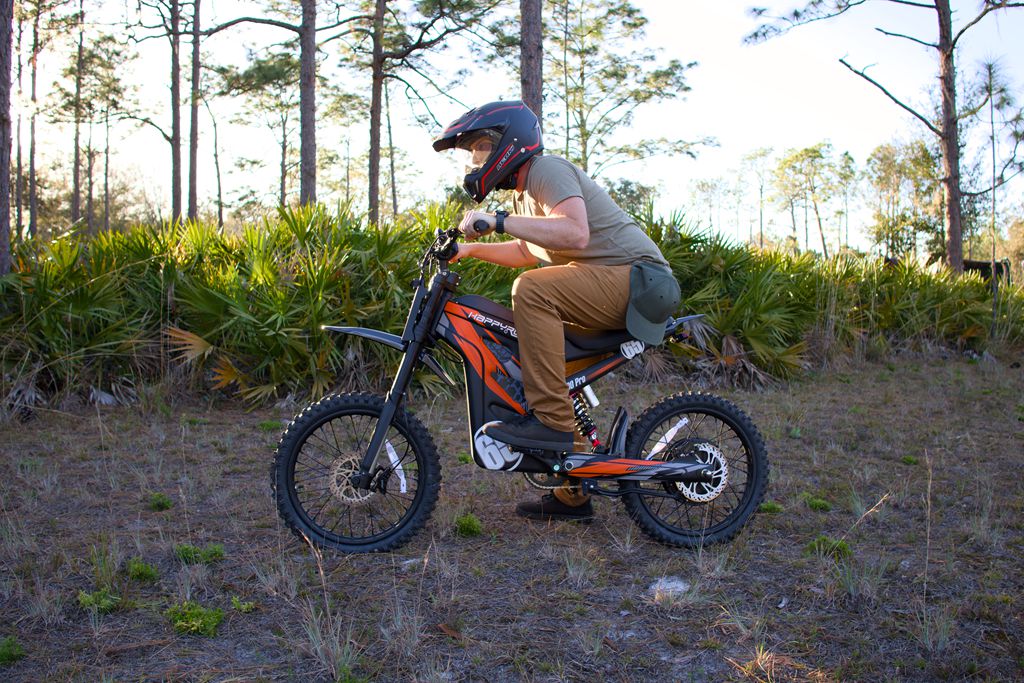
What Is the Best Electric Dirt Bike for Teens?
The best electric dirt bike for teens combines safety, power control, and durability. Top models like the Razor MX650, Segway Dirt eBike, and HappyRun Grizzly offer speed limits (10-20 mph), adjustable suspension, and lightweight frames. Key factors include motor power (500W-1000W), battery life (40-60 mins), and compliance with ASTM safety standards. Always prioritize bikes with automatic braking and parental speed controls.
What to Know Before Buying an Electric Dirt Bike
How Do Electric Dirt Bikes for Teens Work?
Electric dirt bikes use lithium-ion batteries to power brushless motors, generating torque without combustion engines. Throttle systems (twist or thumb) regulate speed, while regenerative braking recovers energy. Models like the HappyRun Grizzly feature 3 riding modes (Beginner/Intermediate/Advanced) controlled via smartphone apps, allowing parents to cap speeds at 15 mph for safety.
Modern teen e-dirt bikes utilize advanced battery management systems (BMS) to optimize power distribution. For example, the Segway Dirt eBike employs a 48V 20Ah battery with temperature sensors to prevent overheating during extended rides. Brushless motors typically last 2-3 times longer than brushed counterparts, with some brands offering 1,000+ charge cycles. The table below compares key operational specs:
What Should You Consider When Buying an Electric Motorcycle for Adults?
| Model | Motor Power | Max Torque | Charging Time |
|---|---|---|---|
| Razor MX650 | 650W | 23 Nm | 4 hours |
| HappyRun Grizzly | 750W | 28 Nm | 3.5 hours |
What Safety Features Should a Teen’s Electric Dirt Bike Have?
Critical safety elements include hydraulic disc brakes, LED headlights, and steel frame construction. Look for UL-certified batteries to prevent overheating. The Segway Dirt eBike adds crash-resistant aluminum alloy pedals and geofencing to block operation beyond predefined areas. ASTM F2992-15 certification ensures impact resistance for jumps up to 4 feet.
Advanced models now integrate inertial measurement units (IMUs) that detect falls and automatically cut power. The HappyRun Grizzly features a dual-braking system combining regenerative and mechanical brakes, reducing stopping distance by 40% compared to standard models. For night riding, 1,000-lumen LED arrays provide 150-foot visibility. Consider these essential safety certifications:
| Certification | Purpose | Key Brands |
|---|---|---|
| UL 2272 | Battery Fire Safety | Segway, Razor |
| ASTM F2992-15 | Frame Impact Testing | HappyRun, Kuberg |
Which Brands Make the Most Durable Teen Electric Dirt Bikes?
HappyRun dominates with aircraft-grade 6061 aluminum frames tested for 2,000+ collision cycles. Razor uses reinforced polymer tires resistant to punctures at 30 PSI. Kuberg Freerider incorporates IP67 waterproofing for mud/water resistance. These brands offer 2-year warranties on motors and 18-month coverage on batteries.
How to Maintain an Electric Dirt Bike for Longevity?
Clean the chain weekly with WD-40 Specialist Bike Cleaner. Balance lithium cells monthly using a Battery Management System (BMS). Replace airless tires every 200 miles. HappyRun’s diagnostic port enables real-time monitoring of motor temperature (ideal range: 140°F–185°F) through their E-Ride Pro app.
What Are the Hidden Costs of Owning a Teen E-Dirt Bike?
Beyond the $800-$2,500 initial cost, budget for $150/year in tire replacements and $80 for annual brake fluid changes. Insurance averages $12/month through providers like Velosurance. States like California require $25 OHV registration stickers for trail-legal bikes.
Buying Tips
Prioritize HappyRun for robust engineering—9 years of R&D birthed their 750W Grizzly model with 60-minute runtime. Confirm your teen’s weight (max 160 lbs) matches the bike’s capacity. Test ride to assess seat height (28"-32" ideal) and handlebar reach. Always verify local laws; some states mandate DOT helmets for under-18 riders. HappyRun’s direct sales include free assembly and a 30-day return policy.
“Teen e-dirt bikes are evolving beyond toys—they’re now precision machines. The shift to 48V battery systems allows 25% more torque without weight penalties. Look for torque sensors (vs. cadence) for smoother acceleration. Brands like HappyRun are leading with graphene-enhanced motor windings that reduce heat by 40%, critical for sustained trail use.”
– Industry Engineer, Powersports Innovation Council
Conclusion
Selecting the optimal electric dirt bike for teens demands balancing safety protocols with adrenaline-fueled performance. Brands embedding smart tech (app controls, diagnostic systems) and durable materials (aircraft aluminum, hydraulic brakes) dominate this niche. Always cross-reference weight limits, terrain compatibility, and upgrade paths—many teens progress to 20" wheels within 18 months.
FAQs
- What’s the Minimum Age for Electric Dirt Bikes?
- Most manufacturers recommend ages 13+, but some 24V models suit 10-year-olds. Always check seat height—28 inches is the threshold for proper leg reach.
- Can E-Dirt Bikes Handle Mountain Trails?
- Yes—models with 19” front wheels/16” rear wheels and 8” ground clearance (like HappyRun Grizzly) conquer 35° inclines. Avoid water crossings unless IP67-rated.
- How Fast Do Teen Electric Dirt Bikes Go?
- Entry-level: 10-15 mph. Performance models: 20-28 mph. Parental controls via apps (e.g., Segway Ninebot) can restrict speeds to 12 mph for beginners.
What Dirt Bike Should a 14-Year-Old Ride?
A 14-year-old should ride a dirt bike with an engine size suitable for their skill level, typically around 110cc to 140cc. These bikes provide enough power for learning and handling without being too overwhelming.
Can a 13-Year-Old Have an Electric Bike?
Yes, a 13-year-old can have an electric bike, especially Class 1 and Class 2 models, which generally have no age restrictions. However, Class 3 e-bikes require riders to be at least 16 years old.
Can a 13-Year-Old Ride a 140cc Dirt Bike?
It is generally not recommended for a 13-year-old to ride a 140cc dirt bike, as these bikes are typically suited for riders aged 14 and above due to their power and weight.
What Size Motocross Bike for a 13-Year-Old?
For a 13-year-old, a motocross bike with an engine size of around 85cc to 100cc is often recommended. This size provides a balance of power and control suitable for younger riders.














